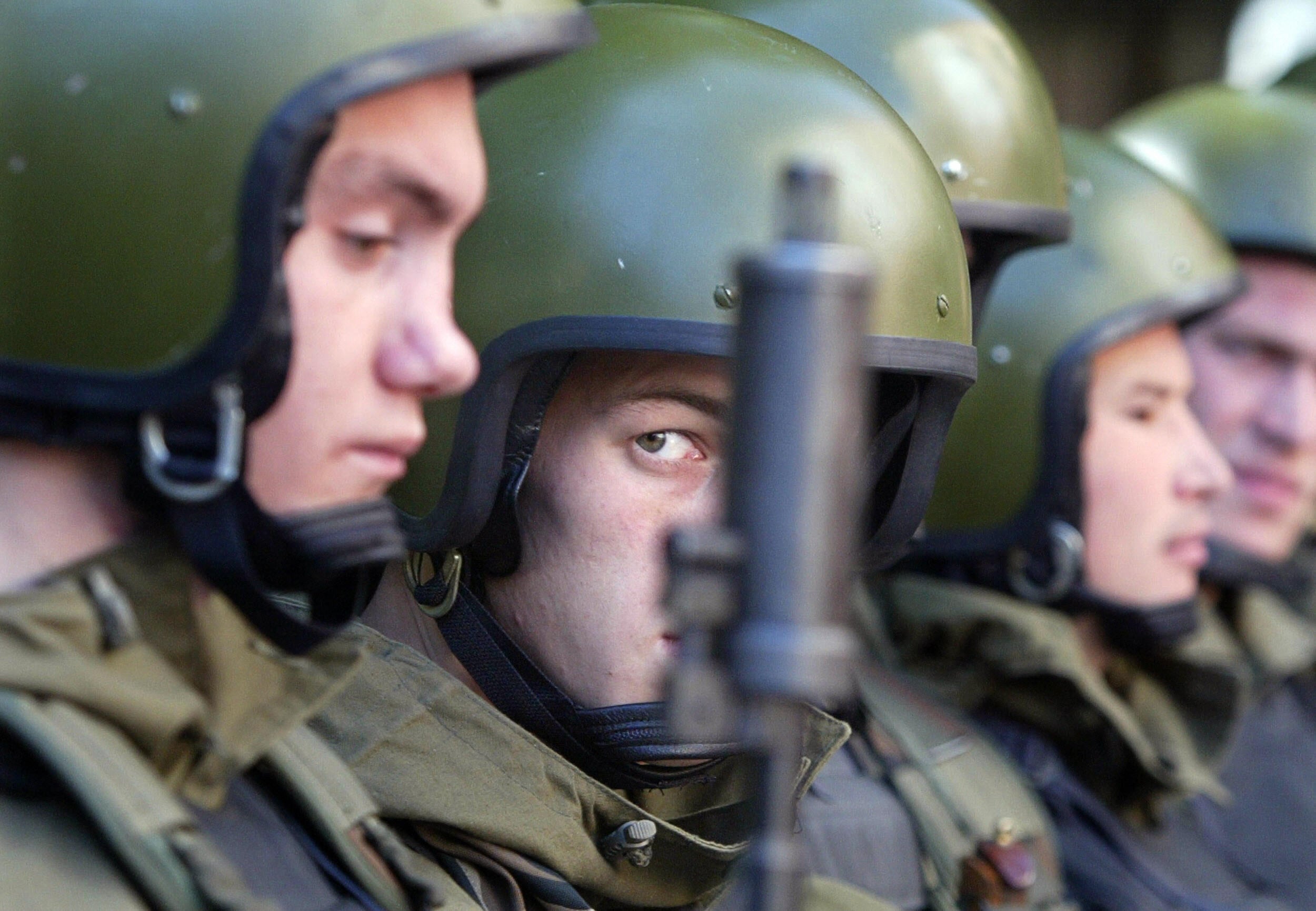WASHINGTON — The Pentagon has begun to shift the focus on irregular warfare away from the specific counterterrorism missions of the last two decades and toward a broader effort that includes information warfare and gray zone operations, a top special operations official said Friday.
Joe Francescon, deputy assistant secretary of defense for special operations and combating terrorism, told reporters that the shift is needed to counter China, Russia and Iran.
Francescon was speaking as part of a rollout of an unclassified version of the Irregular Warfare annex of the National Defense Strategy. The strategy was rolled out Jan. 19, 2018, under then-Defense Secretary Jim Mattis, but the annex was not completed until early 2019 and took “a long time” to declassify to the point where even the 12-page summary could be shared with the public, Francescon said.
The goal in releasing the document now is to share a broad sense with allies, Congress and the general public about the thinking behind the department’s shift in how it approaches irregular warfare strategies, before a full-blown conflict emerges. Efforts the department is looking to counter include China’s use of economic power and Russian misinformation campaigns, he said.
RELATED

“I think it’s important for the United States to characterize, both for us and for our allies, the military, national security impacts of what our adversaries are doing to us in the gray zone space before armed conflict. It can’t just be an armed conflict solution, is what we’re looking at,” he said.
“We believe the increased awareness of our adversaries' activities is really essential, and it’s a pivotal indicator that we are making progress in this in this space. But I think we’ll always be underprepared” to an extent, given how quickly challenges can change in the modern era, he noted.
The biggest impact Francescon said he has seen since the completion of the classified annex is getting key members of Congress to understand that the Pentagon needs flexibility to shift away from the yearslong counterterrorism-focused operations. His hope is that change will be reflected in the department’s next budget request.
“Naturally, as the way were looking at it right now, we probably expect more of a drawdown in our CT [counterterroism] monies just because that’s where we are not doing these large-scale CT operations in some of these theaters,” he said. “We’re transitioning more to training and education. So you’ll see, hopefully, those budgets ramp up [including] distinct information operations capabilities.
“It’s ultimately our goal that we maintain a very cost-effective move towards irregular warfare, not away from CT but in conjunction with the CT drawdown. It’s just more important than ever that we be cost-effective with the very small resources that we do have.”
In order to avoid a boom-bust cycle of irregular warfare training and capabilities, the document lays out six key goals:
- Break the reactive cycle of investment in information warfare, or IW, capabilities by institutionalizing lessons learned from past conflicts, and preserving a baseline of IW-focused expertise and capabilities.
- Sustain IW as a core competency for the entire joint force, not just special operations forces.
- Ensure widespread understanding and sufficient expertise in IW.
- Ensure its approach to IW becomes more agile and cost-informed by developing and employing resource-sustainable IW capabilities.
- Seize the initiative and use IW capabilities proactively to expand the competitive space, defeat our adversaries' competitive strategies, and prepare for an escalation to conflict, if required.
- Organize to foster and sustain unified action in IW with interagency partners as well as key allies and partners.
When asked about real-world implementation, Francescon pointed to last year’s downing of an American drone by Iran. While Iran claimed the drone was a threat to its airspace, the U.S. cited open-source flight information to dispute that claim; pushing that info out, along information claiming the drone was unarmed, was a win for the kind of irregular tactics on which Francescon is focused.
“Iran shooting down a drone doesn’t necessarily require some sort of military kinetic response back to them. And we’re looking to try to impose and create the menu of items that we have a wide range of options to impose costs on our adversaries to restore the competitive balance to our favor at the end of the day,” he said.
“Proper employment of irregular warfare capabilities looks to proactively shape conditions to the advantage of the United States and our allies, impose costs, and create dilemmas for adversary strategies,” Francescon added. "Our approach does not require significant new resources to adapt to great power competition, nor does it require violence. Instead, and I think this is important, we’re mixing the full range of our capabilities in creative, dynamic and unorthodox ways.
“So our summary here is going to reassure the American public, our interagency partners, and our global network of allies and partners that we will use all tools at our disposal to compete against revanchist states today, and will be prepared for the crisis of the future as they arise.”
Aaron Mehta was deputy editor and senior Pentagon correspondent for Defense News, covering policy, strategy and acquisition at the highest levels of the Defense Department and its international partners.








